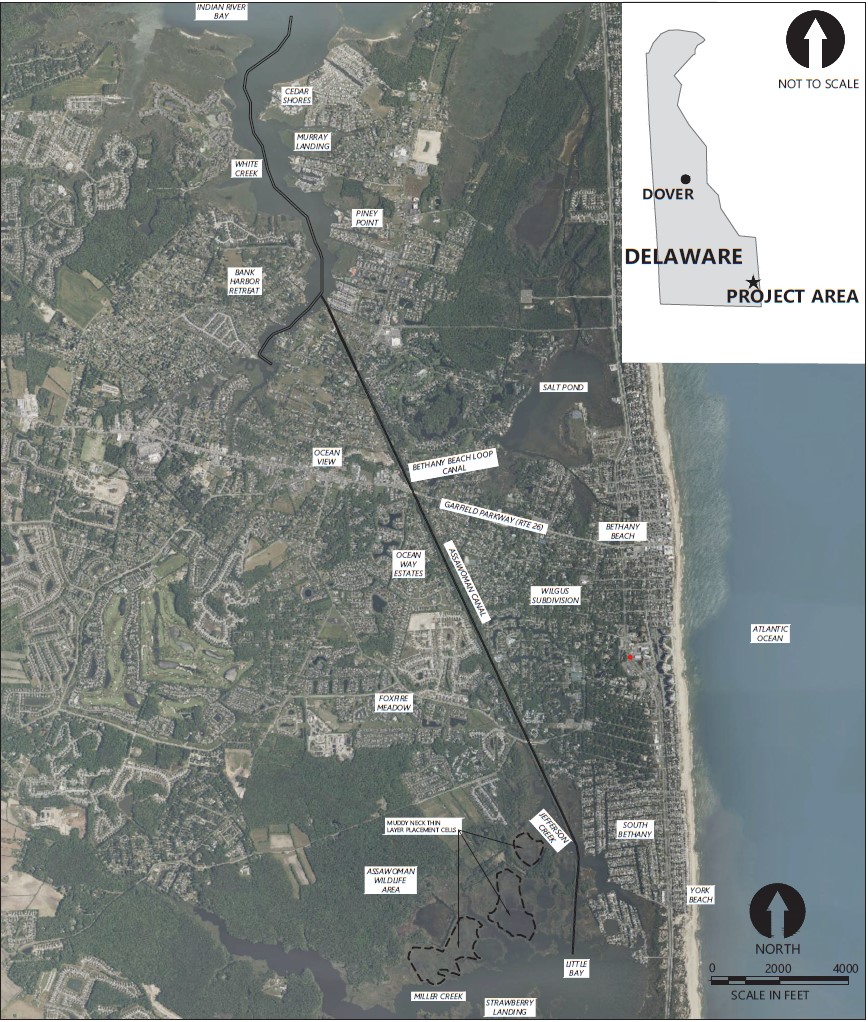The Delaware Department of Natural Resources and Environmental Control (DNREC) has completed a dredging project in the White Creek and Assawoman Canal navigation channels.
The primary goal of the project was to improve safe navigability. Secondarily, dredged material was placed in degraded marshes to restore lost habitat.

The $8.5 million project was awarded to McLean Contracting Company. It began in November 2023. McLean began work clearing the Canal of woody debris that would obstruct the dredging project. During this time, dredge components were being delivered, assembled, and positioned to begin dredging.
Dredging began in White Creek at the confluence with Assawoman Canal moving upstream toward the prongs of the creek (which at been dredged in the previous season).
Afterwards, the dredge moved downstream toward the mouth of White Creek at Indian River Bay.
Following completion of White Creek, the dredge began work in Assawoman Canal. It started at the northern end and moved southward to the confluence with Jefferson Creek.
The dredging of Assawoman Canal was completed in mid-July 2024. A total of 30,000 cubic yards was dredged from White Creek and 35,000 cubic yards was dredged from Assawoman Canal.

Most of the dredged material (45,000 cubic yards) was placed in Placement Area 2 of the Muddy Neck Marsh Complex in the Assawoman Wildlife Area. The remaining 20,000 cubic yards was placed in Area 1.
The dredged material was placed over approximately 58 acres of degraded tidal marsh to an average elevation of 2.3 feet above +2.3’ Mean Lower Low Water (MLLW) to restore or enhance these areas.
The areas where dredged material was placed will be monitored and are expected to naturally become vegetated with native marsh grass species.
Initial reports from boaters during and shortly after dredging was that navigability was greatly improved. However, the Assawoman Canal is prone to obstruction from fallen limbs and trees.
For questions regarding the completed project, contact the DNREC Shoreline and Waterway Management Section at 302-608-5500.
To report navigational hazards, please contact DNREC’s Delaware Seashore State Park, at 302-227-2800.
Related Topics: assawoman canal, boating, channel, dredge, dredging, inland bays, watershed stewardship, waterways, white creek